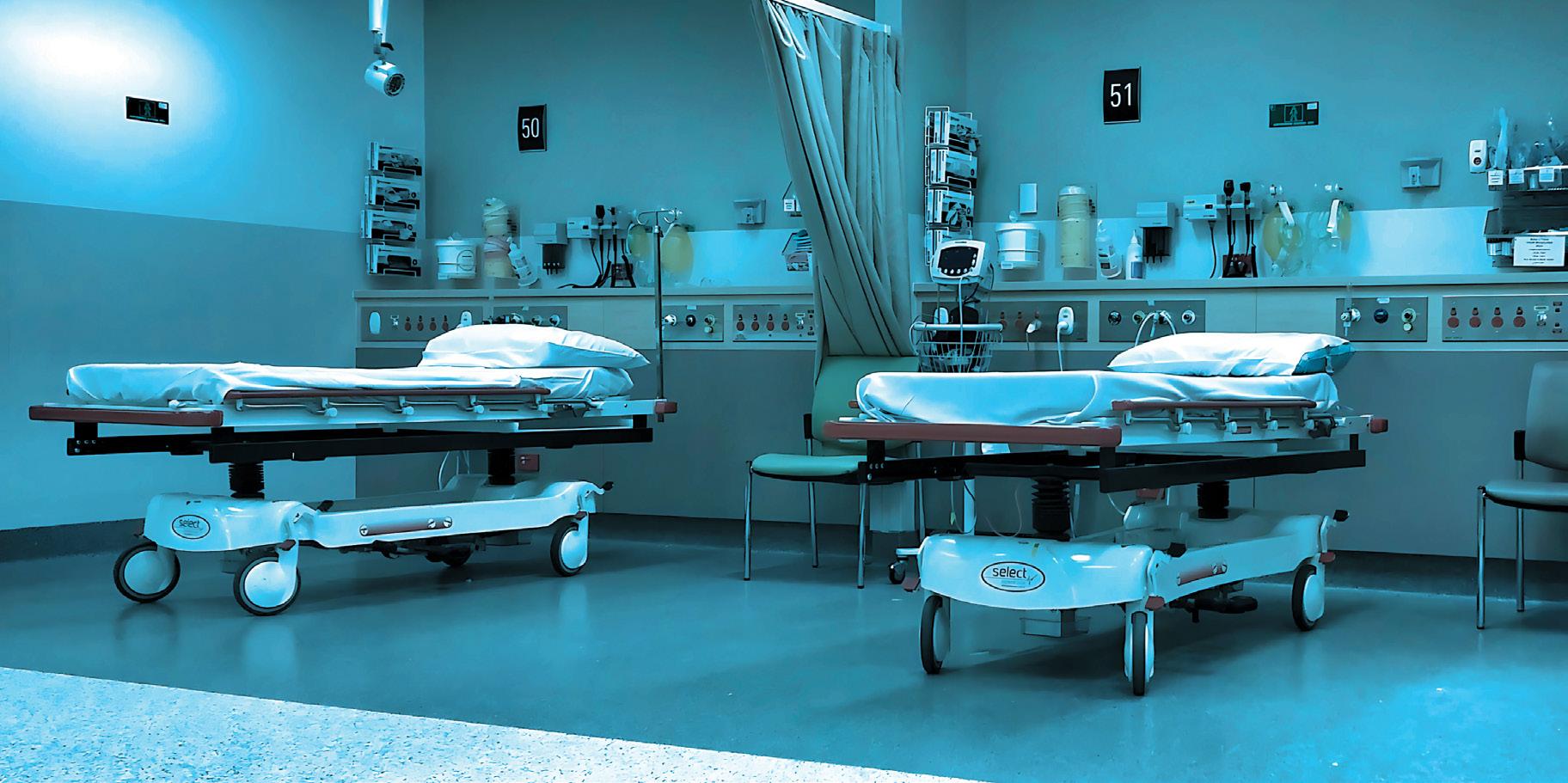
4 minute read
Essential benefits of healthcare cleaning
In healthcare settings, maintaining cleanliness is crucial for protecting patient health, supporting staff safety, and ensuring regulatory compliance. Healthcare-acquired infections (HAIs) remain a significant risk that impact patient outcomes and the facility’s reputation. This makes healthcare cleaning practices essential. By implementing a comprehensive cleaning strategy, facilities can reduce infection risks, enhance patient experience, and create a safer environment for everyone. Here are the core benefits of healthcare cleaning and how it can help facilities achieve the highest standards in hygiene.
Reducing infection risks with healthcare cleaning
One of the main objectives of healthcare cleaning is to prevent the spread of infections. High-touch surfaces in healthcare settings, such as bed rails and door handles, can quickly become breeding grounds for pathogens. Without proper cleaning and disinfection, these germs can spread easily, posing risks to patients and staff alike.
• Targeting high-touch areas: Regularly cleaning surfaces that are frequently touched can help break the chain of infection. By prioritising these areas, facilities can significantly reduce the presence of bacteria and viruses.
• Complementing hand hygiene: Combining hand hygiene practices with thorough cleaning protocols ensures that surfaces stay germfree, even in high-traffic areas. Clean surfaces reduce the likelihood of contamination, supporting a more comprehensive approach to infection control.
A well-implemented cleaning programme is essential in reducing HAIs, leading to better patient outcomes and fewer readmissions.
Enhancing patient recovery
A clean healthcare environment not only helps prevent infections but also positively impacts patient recovery and overall satisfaction. Patients who feel safe and comfortable in a wellmaintained facility are more likely to have a positive experience, and this perception of care quality can aid in their recovery.
• Psychological benefits of cleanliness: Patients experience less anxiety in a clean, orderly setting. Knowing that hygiene is prioritised can provide peace of mind, contributing to a supportive healing environment.
• Boosting facility reputation: Visible cleanliness in healthcare facilities builds trust with patients and their families. A commitment to cleanliness enhances the facility’s reputation and encourages positive reviews.
By investing in healthcare cleaning, facilities not only create a healthier space but also contribute to a better patient experience that can elevate their reputation.
Protecting healthcare staff with effective cleaning protocols
Effective cleaning protocols are vital for the safety and well-being of healthcare staff who are frequently exposed to pathogens. A clean environment minimises their risk of exposure and supports a healthier, more productive workforce.
• Reduced sick days and absenteeism: An effective cleaning programme helps limit exposure to harmful contaminants, which reduces the frequency of illness among staff. This leads to fewer sick days and supports consistent staffing.
• Providing peace of mind for staff: Working in a clean and hygienic setting reassures staff that their health and safety are prioritised. This can increase job satisfaction and reduce stress, leading to a more engaged workforce.
By protecting healthcare staff with robust cleaning practices, facilities can foster a positive work environment that enables staff to provide high-quality care to patients.
Preventing cross-contamination and improving air quality
Cross-contamination is a serious concern in healthcare environments, where patients with various health conditions may share spaces. Effective cleaning practices help reduce this risk and support better indoor air quality, contributing to a healthier environment.
• Dedicated tools for different areas: To minimise crosscontamination, facilities often use designated cleaning tools for specific areas, such as isolation rooms. This strategy is a best practice for reducing the spread of pathogens.
• Improving air quality through routine cleaning: Dusting, disinfecting, and maintaining ventilation systems as part of a cleaning protocol can improve air quality, reducing respiratory risks for patients and staff alike.
Addressing cross-contamination and enhancing air quality through cleaning is essential for maintaining a safe, comfortable environment.
Supporting cost efficiency and sustainability
While healthcare cleaning requires resources, it also delivers long-term savings by preventing infections and extending the life of equipment. In addition, many facilities are adopting sustainable practices in their cleaning routines, contributing to environmental goals.
• Extending equipment lifespan with regular cleaning: Consistent cleaning helps prevent dust and grime buildup on medical equipment, reducing wear and tear. This proactive approach can prevent costly replacements and maximise resources.
• Adopting sustainable cleaning solutions: More facilities are choosing eco-friendly products and methods to reduce environmental impact. These sustainable practices align with healthcare’s broader goals for social responsibility while maintaining hygiene standards. Investing in an efficient cleaning strategy not only improves safety and health but also supports sustainability and cost savings, allowing facilities to maintain high standards without unnecessary expenses.
The next pandemic or antibioticresistant superbug could emerge anywhere. Our best defence lies not in isolated efforts but in a coordinated global response. Let us work together – across borders and disciplines – to ensure that infection prevention remains a priority for all.










